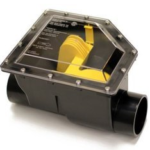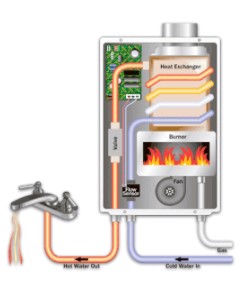PLUMBING
As for water piping, we can use rigid plastic or CPVC. CPVC can handle temperatures up to 200 degrees F. CPVC pipe has comparable corrosion resistance to PVC pipe yet it is suitable for handling material at temperatures 40 to 60 degrees F higher than regular PVC. It is lightweight, easy to assemble and install. Job-site erection of a leakproof joint can be made in only a minute with solvent cement, or by threading.

PEX pipe
PEX piping is commonly used. It is a flexible piping product that has been used in plumbing systems for more than 20 years. PEX tubing won’t pit, scale or corrode and, because of its flexibility, it also offers potential protection from kinking. Some plumbing systems feature PEX-a tubing, which is considered the superior PEX tubing manufacturing method in the industry. PEX-a is the most flexible of all PEX types, and because of its shape and thermal memory, it can use ProPEX expansion fittings which are the only fitting system that actually gets stronger over time – making it highly leak resistant. A friend advised me to upgrade the size of the pipe to take into account scale/limestone buildup in the pipes.
For waste water, heavy rigid black plastic plumbing pipe schedule 40 will be used. I would like to install a sewer backflow preventer to keep flood water from backing up sewerage into the house. The waste water utility says they have one at each house, but theirs have been known to fail.

Backflow preventer
There is solar proof UVR Sch40 plastic pipe for use in above ground applications sizes from 1/2″ to 6″ are available, which are produced in brown color. Special additives are used in the compound to make the pipe ultra violet resistant. I will use this for exposed piping under the stilt part of the house.
We will be required to use low flow toilets. Do we use tankless water heaters? I don’t know how many we would need. One for an outdoor shower too?

Tankless Water Heater

Tankless Water Heater Insides

Plumbing through IC
For a washing machine area or room, a basin with a center drain should be installed. Vent and electric sockets should be built up high in that room to prevent electric shock and water into vents.

Gray Water Recycling
If possible I would like to consider a gray water recycling system. It would collect water from sinks, showers and washing machines, clean it and use it for toilet water. There is a company selling this system, but I do not know if any are built in Florida or the cost. It does require a separate plumbing system
Our original plans called for a cistern. I don’t know if we will be required to install one due to having enough BPAS points to build without it.

